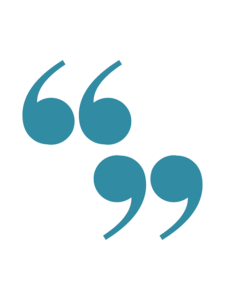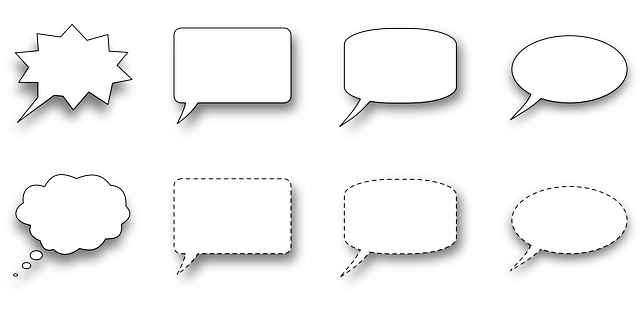How to Quote a Quote: A Guide
How to quote a quote – it’s the eternal question that baffles all of us! But why is it so complicated? Well, the rules differ depending on which side of the Atlantic you happen to be. However, this commonly used literary device is easier to master than you might think.
This article isn’t about in-text citation – check this article out for that! No, we’re going to explore when to correctly use double quotation marks and when you might use single quotation marks around nested quotes. And how you reference someone else’s work while using your own words.
Let’s get started? We’ll discuss how to quote a quote confidently so that you can refer to somebody else’s work, demonstrating your knowledge, wide reading, and analytical skills.
How do you cite a quote of a quote?
The MLA and APA quoting styles are beneficial to touch upon, but for a more thorough account, check out this article.
Quoting a direct quote provides a means for your readers to easily trace the quotation back to its original source and understand where it came from. Even in a paraphrased section, referring to somebody else’s work offers solidity to your fact or argument, demonstrating that you’ve done your research.
The most common ways of citing a quote are through MLA or APA style, although we’ll look at the more relaxed approach later.
The MLA style of citing a quote

In Modern Language Association (MLA) style, you need to include the author’s name and page number in parentheses after the quotation marks, even if you’re not using the whole sentence.
In MLA, you enclose quotes with double quotation marks when quoting directly and add a reference list at the end of your text so you can detail the publication and version you’re using.
For example, if you were quoting a line from William Shakespeare’s Romeo and Juliet, you would write: “Parting is such sweet sorrow” (Shakespeare 2).
The APA style of citing a quote
In APA style, you must also include the author’s name and the year of publication in parentheses after the quotation marks. This allows the text to stand out from the surrounding text, even if you’re not using the entire quote.
And again, a reference list at the end of the document helps make sense of page numbers.
How do you cite a quote in a research paper?
Sometimes quoting a quote less formally can be tricky.
Here are some tips to help you quote a quote correctly:
Introducing a quote
When introducing a quote within a quote informally, use the author’s name and the work’s title.
But note the use of double quotation marks and single quotation marks in this citation style.
For example,
“As Mark Twain said in The Adventures of Tom Sawyer, ‘It’s not the parts of the Bible that I don’t understand that bother me, it’s the parts that I do understand.’”
You could also use italics to help the title stand out from the surrounding text.
For example,
“As Mark Twain said in The Adventures of Tom Sawyer, ‘It’s not the parts of the Bible that I don’t understand that bother me, it’s the parts that I do understand.’”
How to use quotation marks

If you don’t include any information about the quote’s origin or context when introducing it, just make sure to include double quotation to mark the original quote.
For example,
“‘Life is what happens when you’re busy making other plans.’”
More about this later, but note that there are two sets of quotation marks here – double, then single marks.
When to indent a quote
If the quote is over four lines long, you should indent it and single-space it like any other block quote in your paper or essay.
Crediting the author you’re quoting
Make sure to include a citation at the end of your quote, either in a parenthetical citation directly after the quote or using a Works Cited list (or reference list) if you’re writing an academic paper.
Even when writing a paraphrased section, it’s helpful to credit your source because it adds validity to your point, even if you’re not using a block quotation style or even adding quotation marks around the text.
For example,
BKS Iyengar talks about the benefits of inversions in the context of pranayama breathing.
Here, I’m referring to someone else’s ideas and citing them to reinforce my statement, but I’m not using quotation marks because I’m not referring to the exact words BKS Iyengar uses.
How do you quote someone quoting someone else?
When you’re citing someone else’s quote, the American Psychological Association (APA) recommends using “qtd. in” to indicate that the source was quoted in another work.
For example:
John Smith said, “Life is not always easy,” qtd. in Jane Doe’s essay, “Working Through Difficult Times.”
Obviously, “qtd. in” is an abbreviation for “quoted in.”
How do you use quotation marks when quoting a quote?
The way you use quotation marks varies depending on whether you’re a British English writer or use American-rule English. And there are some differences in where you might place your punctuation mark when using nested quotation marks.
British English
British English (BE)is the written language commonly used in the UK, but you’ll find hybrids of BE and American English (AE) used in Australia and Canada.
BE uses spelling variations, such as:
- Colour for color
- Recognise for recognize
- Favourite for favorite
Of course, Brits and Americans both understand British English and American rule English. But the way they use quotation marks is different.
The BE approach to quotation marks
If you use British English, you’ll use single quotation marks when using a direct quotation and double quotation marks when quoting a quote.
Let me give a couple of examples:
Examples
This is how to include a quotation within a quotation if you’re quoting someone who is quoting someone else (in BE).
You might write:
Professor Smith stated, “Today we’re going to examine the universal truth ‘To be or not to be’”.
Here, we present Professor Smith’s own words within double quotation marks and use single quotation marks to represent their use of the Shakespeare quote.
And note the punctuation mark that sits OUTSIDE the quotation marks.
The American English approach
American English writers use double quotation marks for direct quotations and single quotation marks for quotes within quotations.
Examples
Here, single quotation marks represent the speaker’s words, and double quotation marks indicate the direct quote.
i.e.,
Professor Smith stated, ‘Today we’re going to examine the universal truth “To be or not to be.”‘
Note that, in AE, the punctuation sits inside the quotation marks at the end of the sentence.
How to use Quotation marks for clarity
While this can be confusing, I recommend simply picking a rule and sticking with it. You might be writing an academic paper for college – in that case, find out their preferred house style and adopt that.
Whichever citation style you choose, it’s consistency that’s important.
How to write for the web – which citation approach to use
If you’re writing content for a UK (or Australian) audience, go for British English. However, in general, the internet is primarily considered American English territory.
So, if you’re writing your content for global publishing on paper or online, go for American English.
Do I use links or quotation marks?

The internet protocol is to use internal or external links if you’re quoting a quote or referring to someone else’s work on a published page – regardless of whether it’s a blog or web copy.
There are two principal approaches:
Wiki-style referencing
Wikipedia-type resources use a more academic citation model – using internal, numbered parenthetical citations that link to a reference list at the end of the document. This list includes details of other sources used within the body of the text, attributing single quotes, nested quotes sources to substantiate facts, and
The typical Wiki reference list uses a Harvard-style cited list, combined with hyperlinks wherever possible.
Hyperlinking as a point of reference
Parenthetical citations can become a little laborious to both write and read, so in less formal contexts, such as blogging, hyperlinking is universally accepted as a citation.
And while there are no hard and fast rules regarding where to place your hyperlink within an original quote, it’s helpful to develop your own style and stick with it.
Remember, consistency is the key to good referencing.
Some examples:
Smartphones have become the internet device of choice, driven by the mobile-first approach to web design.
Alternatively, you could paraphrase and reference like this:
According to Figment Agency, the smartphone is now the internet device of choice. This has driven the movement towards smartphone-friendly design for websites.
Here, we hyperlink the source and paraphrase the concluding sentence. Remember, we’re writing our content for the reader to digest – hyperlinking allows you to focus on the content and context while ensuring the reader can follow up on your sources easily.
Conclusion
See – quoting an original quote doesn’t have to be intimidating!
Just remember to use proper punctuation (using single quotation marks and double quotation marks appropriately), introduce the quote correctly, and use cited lists and consistent citation styles.
And you’ll master quoting a quote like a pro!
Thanks for reading!

Harry Wallett is the Managing Director of Cascadia Author Services. He has a decade of experience as the Founder and Managing Director of Relay Publishing, which has sold over 3 million copies of books in all genres for its authors, and looks after a team of 50+ industry professionals working across the world.
Harry is inspired by the process of book creation and is passionate about the stories and characters behind the prose. He loves working with the writers and has shepherded 1000s of titles to publication over the years. He knows first-hand what it takes to not only create an unputdownable book, but also how to get it into the hands of the right readers for success.
Books are still one of the most powerful mediums to communicate ideas and establish indisputable authority in a field, boosting your reach and stature. But publishing isn’t a quick and easy process—nor should it be, or everyone would do it!
A professional grade book takes 250+ individual tasks to complete. Cascadia is an expert in every single one of them. Do you want to harness our expertise to launch your book into the stratosphere? Chat with us!








Leave a Reply